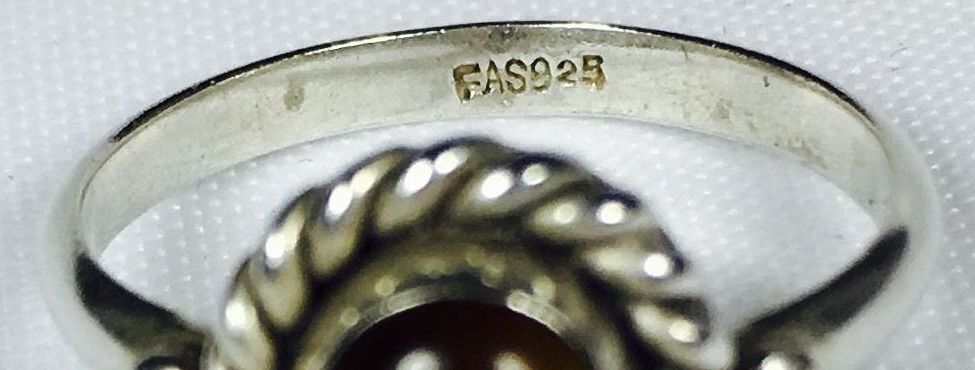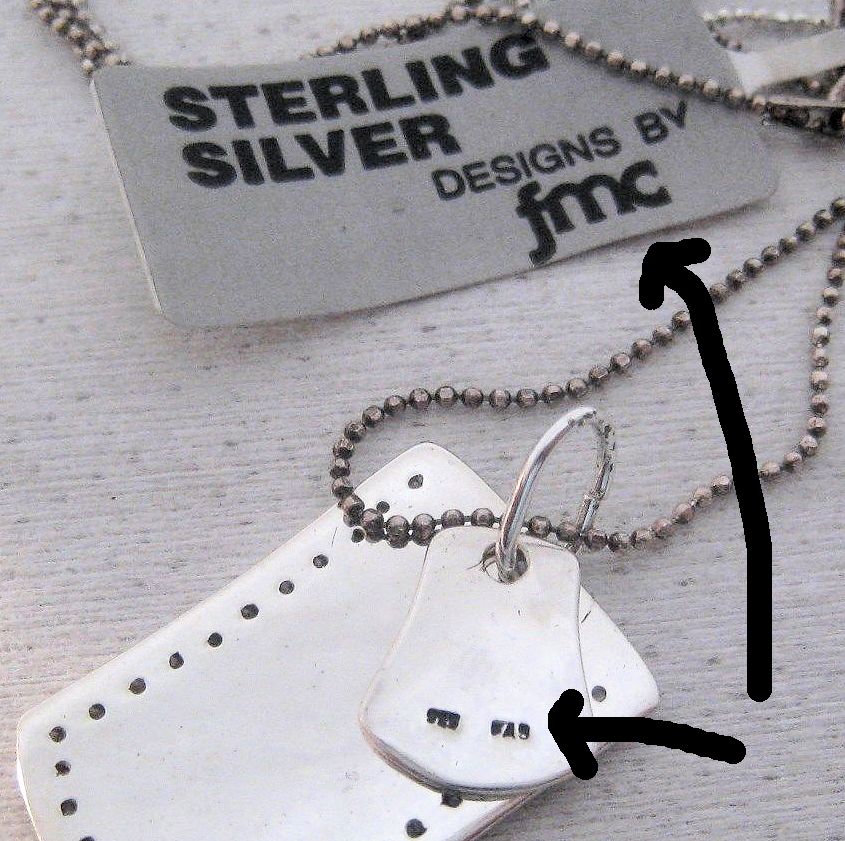FAS Makers Mark

The mark FAS is not for 'Fused Alloy Silver'. What the FAS letters stand for and who the manufacturer actually is was brought up during a jewelry discussion relating to an item in question. An online article was pointed to stating that FAS was identified as Fused Alloy Silver by a Chinese seller when the author questioned them that is what they were told. There is also confusion as you continue your internet search with the mark being for the 'Fantastic Antique Silver Company' to add to the mix.
Its very easy on the internet for a blog posting to be picked up and followed by all who are also seeking information. Soon these high ranking posts have everyone following that lead, copying it over in their listings which is now making it appear to be a 'fact'. To the point that you will see that many items marked with FAS are now stated to be made by Fused Alloy Silver or the Fantastic Antique Silver Company when you do an online search but those names are incorrect.
So who really is FAS then? FAS is an international trademark for Design's by FMC :
Registered # 74203555 - FAS
Designs by FMC, Inc.
1533 60th Street
Brooklyn, New York, NY 11219 (US)
Designs by FMC line includes the manufacturing & wholesale distribution of jewelry, precious stones and costume jewelry since 1976 but this mark has only been in use since 1991. Their jewelry is manufactured overseas and imported back for sale in the US and sold by mass merchandising channels like HSN, Amazon and major department stores. In addition to sterling silver this maker also is a large producer of gold and silver plated fashion jewelry also marked FAS but without the metal fineness noted.
There is a very similar FAS trademark in the Chinese registered trademarks database without the horizontal line across the ‘A’ which may be confused with the US maker so pay close attention to how the 'A' looks on the mark.
Here is FMC's corporate website: http://www.designsbyfmc.net/
This is a Designs by FMC hang tag with the FAS trademark:

· As your researching this mark note the Kolidescope Effect at https://nasvete.com/signed-fas...has copied the information from this page with a few minor verbage changes and claimed it as theirs without crediting their source information. However when you scroll down their page's jewelry examples with the FAS mark they state some of the items are 1970's. A sign they did not do their own homework on this mark because even though Designs by FMC existed since 1973, they missed that FMC did not put the FAS mark into use until 20 years later at the end of 1991. FMC's filing on the registration of the FAS mark was not until Sept 16, 1991. In their filing it is noted the mark was first used in commerce one month later on Oct 16,1991. So any jewelry with the FAS mark is no older than late 1991 and more likely made from 1992 to present as they are still in business. I'm sure they will update their page with this though when they copy the new edits made here. They might even add a credit too this time ... ; )

